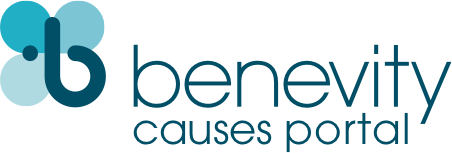FONDAZIONE REB ETS
This organization has already been registered
Someone in your organization has already registered and setup an account. would you like to join their team?Profile owner : i**o@f***********b.c*m
Mission Statement
The EB Registry Foundation (REB) is a moral entity whose mission is to foster scientific and medical research towards the cure of EB. It was established by Debra Italia Onlus (www.debraitalia.com), a non-for-profit organization that gathers together all Italian families touched by EB. Since 1990, Debra Italia has been dedicated to promoting projects in support of families affected by EB. EB is caused by genetic mutations that compromise proteins responsible for skin and dermis adhesion. In children and affected people, the strands of anchoring filaments between the two layers are absent and any action generating minimal friction, such as rubbing or pressure, causes painful bladders and sores throughout the body. To date, there is no cure for EB and the care of children affected requires extreme caution to avoid that even a gentle touch results in a painful trauma. Because of the fragility of their skin, babies with EB are also called butterfly children.
About This Cause
The EB Registry Aims Knowledge of EB and the development of effective therapies are slowed down by the lack of information about the disease, the fact that patients are a few and are based in different regions and cities compared to a few specialized centers for their care, and by the impossibility of carrying out clinical studies on sub-populations of patients with specific characteristics. Having a Registry will not only allow for the systematic and prospective collection of all people with EB, thus paving the way for future clinical trials, but will also make it possible to start standardized treatments with a significant impact on the quality and prospects of life of patients. Specifically, the purposes of the EB Registry will be to: 1. Collect and maintain up-to-date clinical information from as many people with EB as possible; 2. Store patients' personal and clinical information in a safe and secure manner and in compliance with current legislation and the new European Regulation on personal data; 3. Become a tool for new research aimed at treating EB and facilitate the recruitment of the most suitable patients for future clinical trials; 4. Foster collaboration between physicians, researchers and patients and the sharing and dissemination of information. All main Italian reference EB clinical centers are involved in the project. Dataset, IT solution and process The initial dataset will consist of the following macro-areas: 1) Personal data 2) Referring physician 3) Informed Consent 4) History at birth 5) Family history 6) Diagnosis 7) Concurrent pathologies 8) Primary therapeutic interventions 9. Surgical procedures 10) Current therapies 11) Current aids 12) Other treatments Patient data will be anonymized through an IT process that will assign an alphanumeric code to each patient, in accordance with current legislation, and will be stored on a secure server. Each physician will enter patient data via a dedicated web interface and will have free access to their patients' data at any time. Doctors will also be able to access all data contained in the register anonymously or in aggregate. The provision of personal data in the registry by the patients will be subject to an informed consent process that must be approved by the Ethics Committees of the clinical centers involved and that will be communicated to the national Privacy Guarantor. The data provided remain the property of the patient and will be kept in the registry for the purposes stated in the signed information. The day-to-day management of the registry will be carried out in collaboration between an administrator appointed by REB Foundation and the software provider, on the IT side. Each clinic involved will have access to the registry through a dedicated portal. Subsequently, the registry will be equipped with a patient access portal for patients to access their data: patients will be able to enter additional information about daily life and disease management at home. Families will receive regular updates from the registry on the studies and treatments that will be developed in the future.
